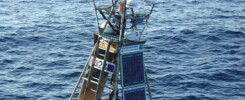Nutrients are building blocks at the bottom of the food chain and determine the productivity of marine ecosystems. The Nordic and Barents seas is a highly productive region that hosts some of the largest commercial fish stocks in the world, including Northeast-Arctic cod and Norwegian spring-spawning herring. The ecosystem in this region depends on nutrient import through advection of water masses from the North Atlantic to sustain productivity. Therefore, the Institute of Marine Research (IMR) has had an extensive ecosystem monitoring program in place for several decades, and all nutrient-data from this region are now available through the Copernicus Marine Service. The dataset consists of standard-depth seawater samples obtained from Niskin-type water bottles of nitrate, silicate, and phosphate from the Nordic seas and the Barents Sea through three decades from 1990. The samples are analyzed in the Plankton Chemistry Laboratory at IMR according to international standards and quality control. After analysis the data are scrutinized manually before final submission to Norwegian Marine Data Centre database. The data are further quality controlled according to In Situ TAC standards before submission to the Copernicus Marine Service database. The data shows a significant decline in silicate concentrations in the upper water column during the late 1990s and the 2000s before stabilizing at new, lower levels.
Vidar S. Lien from IMR







